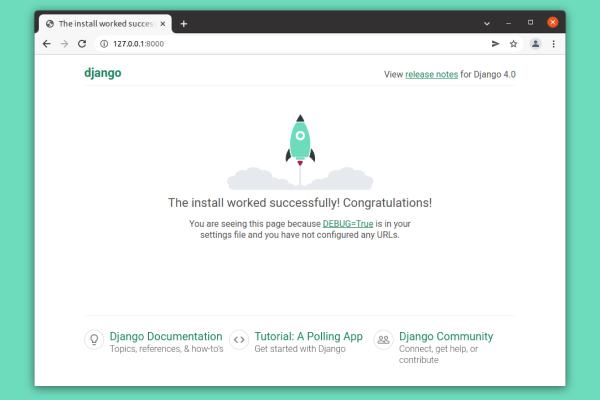Django is a Python framework for web apps. In this article, I’ll show you how to install Django and get started with it – using code examples.
I assume you already have Python installed.
python3 -m pip install Django
This will install Django globally and to test if Django ist correct installed please type below:
django-admin
This is also your door to create a new Django project. Here below I create a new Project named *mypage* – Attention before you create a new project, please navigate in the terminal to your favor Project Folder and than run the command below.
django-admin startproject mypage
Django has a build in Virtual Server to run and test your Project. Still in your project Folder (as an example: mypage) you can run the below subcommand:
python3 manage.py runserver
After you run the subcommand above, you can view your project under: http://127.0.0.1:8000/ (also http://localhost:8000 is working)

The image above will be the output, after you run the server of Django. Only the version of Django will be different.
